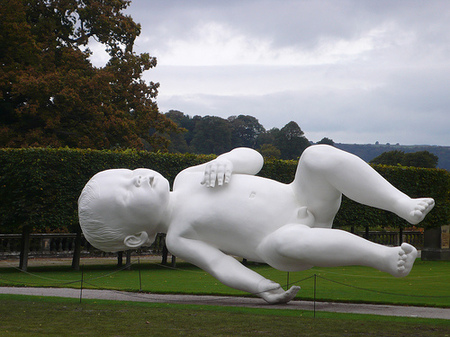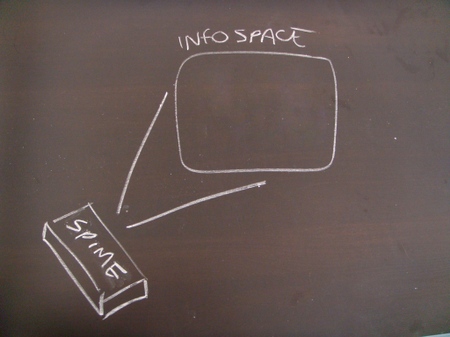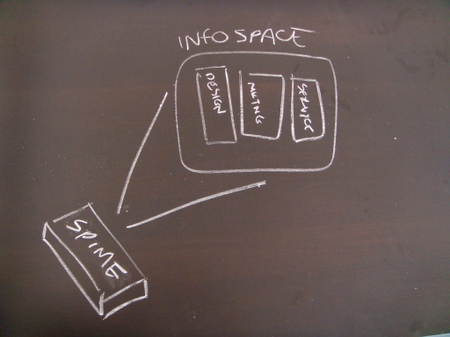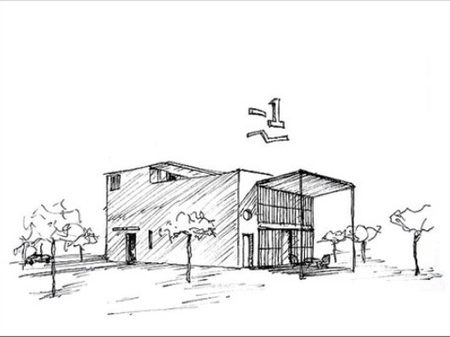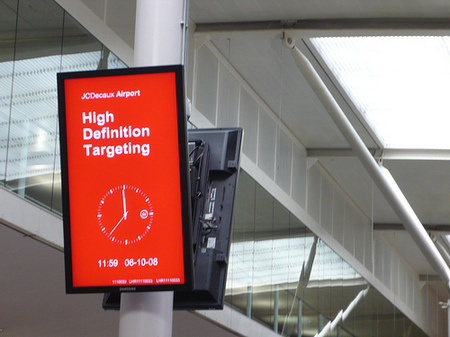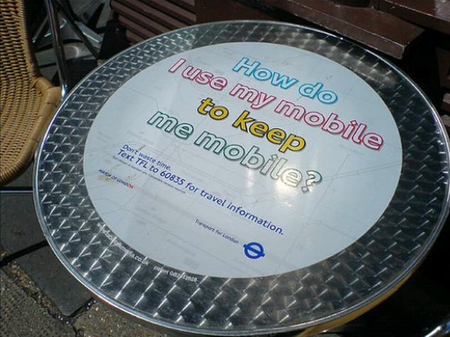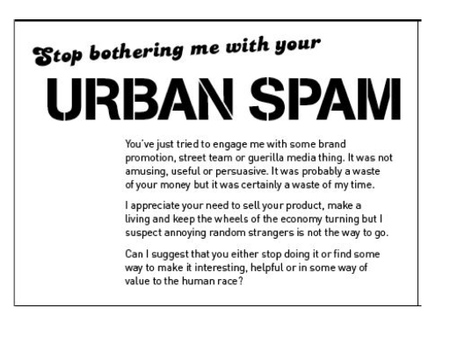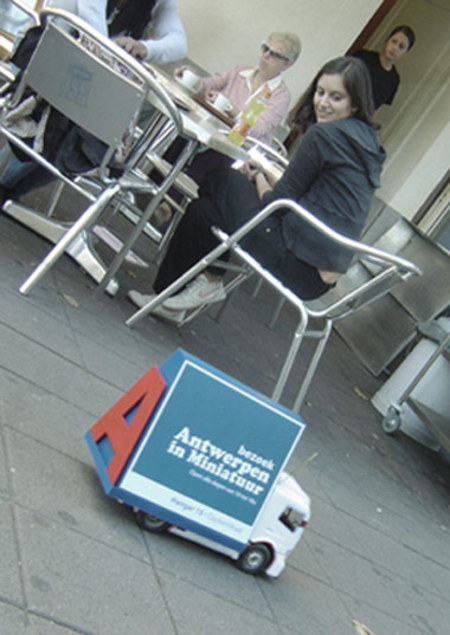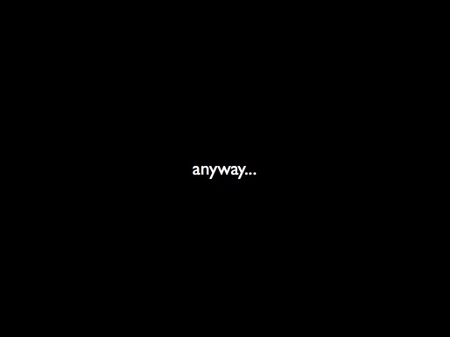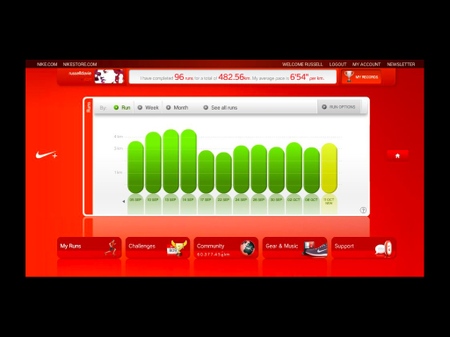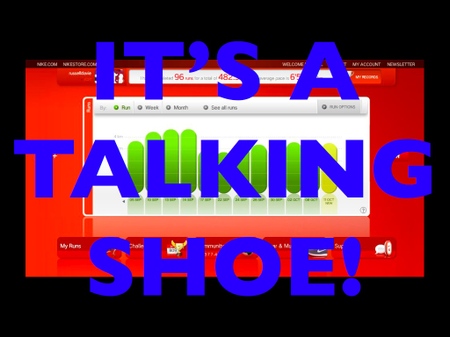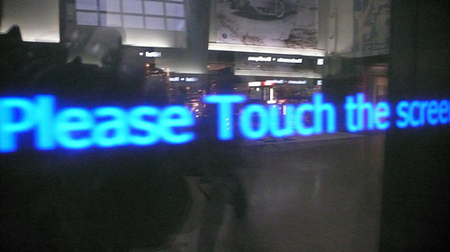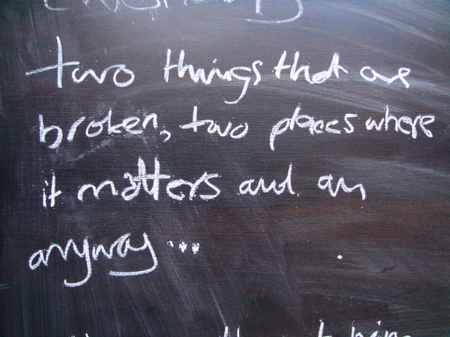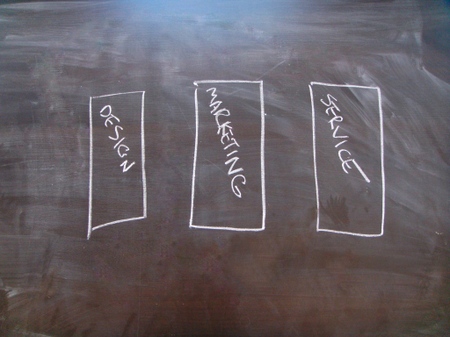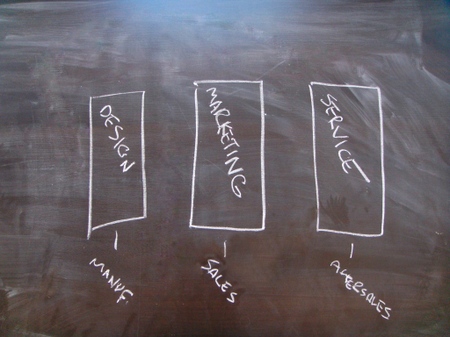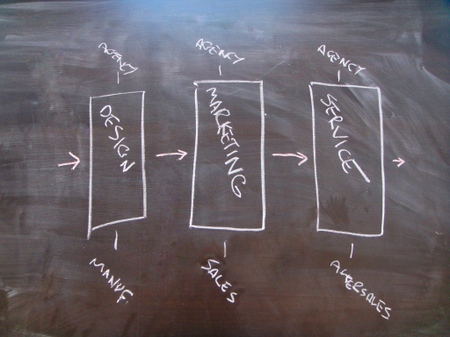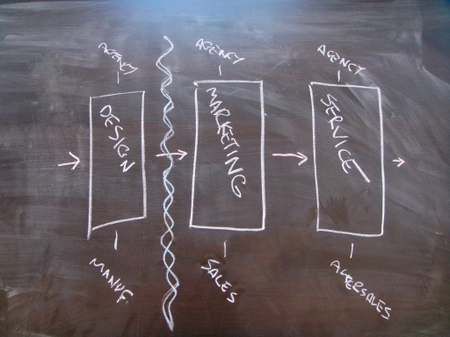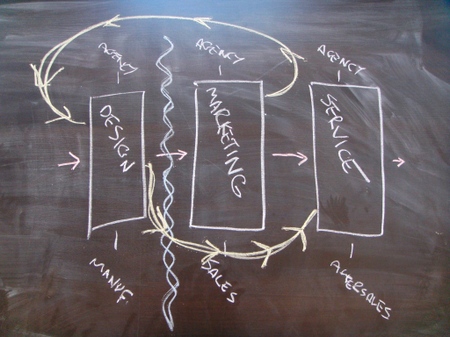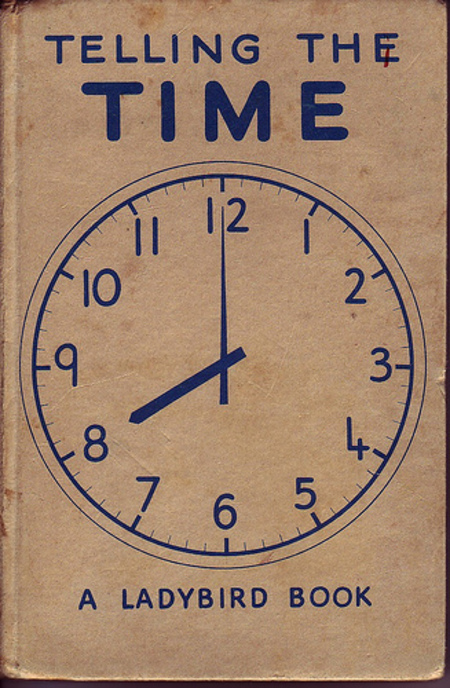Russell Davies
As disappointed as you are
About | Feed | Archive | Findings | This blog by email
« September 2008 | Main | November 2008 »
planet
October 16, 2008 in diary | Permalink | TrackBack (0)
design engaged the second
(For some reason various posts aren't showing up in my RSS feed. Not sure why. So I'm reposting this to see if I can get it to happen. Sorry if you get it twice. )
OK. So, following on from Monday's blahfest, why does it matter so much that we're building a false assumption about marketing and stuff into our technologies, and that we can't get organisations to co-operate and integrate all the phases of a product experience.
The first answer is to do with the increased spiminess of products; the way that every little product will soon come with an accessible bit of information space. This will be a good thing. A product that knows its own history, materials, construction and disposal routine is going to be a smarter and more sustainable product. The only problem is...
...the same mess of corporate non-talking we saw before is quickly going to port itself onto the spime's slender infospace - as soon as the marketing folks find out what the heck a spime is. And this will result in a crappy mess of promotions, cashbacks, trailers, warranty information, EULAs, starbursts and limited time offers crowding out the subtle bits of information design all the design students are dreaming of right now. (Plus, imagine the corporate fuss when someone decides to hack the spime like this.)
And, what's worse, we're going to see the same mess writ even larger - all over our cities. If we thought urban spam was bad. Wait until it's animated, live and augmented, skinned onto our buildings and beamed into our spex.
Designers and architects are excitedly planning for a world where every building is draped in an interactive skin. Buildings like this are being imagined, and will presumably, at some point be built:
And some of them will be beautiful. But most of them will be covered in unsatisfactory media art, and then, fairly swiftly, they'll be featuring 2-for-1 offers from the local pizza shop. Similarly Dan Hill's vision of The Well-Tempered Environment is gorgeous, intelligent and compelling. And I bet stuff like that is going to happen. So we should start talking about the fact that the communication idea encapsulated in an image like this:
Is conceptually more likely to look like this:
(Made-up logo courtesy of Ben.) The dataspace of the well-tempered environment will soon be invaded by logos, credits, banners and offers. The financial temptations will, I suspect, be too hard to resist.
And, as Chris points out, it's already happening. Not in a thoughtful, measured, interaction designy way but in a land-grabbing, shouting in your face, attention-to-me, marketingy way. The likes of JC Decaux are steadily replacing static print posters with screens and movement. And media buyers are buying them and agencies are supplying odd animated versions of posters.
And this makes a huge difference because turning posters into telly is a big change. It's not gradual and it makes us re-examine them and re-evaluate the deal we've made. Which is where I need to take a moment and talk of urban spam. I've been thinking about this a bit more recently, and some of it has a bearing here.
First obvious statement: there've been commercial messages in public spaces for as long as there've been public spaces. Probably. There wasn't a golden age when the public square was free of people hawking their wares. If anything, an environment like Central London is probably less cluttered with advertising than it was 50 years ago. (Anyone? I'm sort of guessing, but I think that's true.)
However, in recent years the declining efficacy of regular 'broadcast advertising' has created the largely horrible ambient and guerilla media industries - a huge marketing arms race aiming to squeeze every drop of attention from unwilling eyeballs.
I think we object to this so much for a number of reasons:
a. Because it doesn't feel like a societally negotiated deal. We're basically OK with the notion of ads in newspapers on in the middle of Coronation Street. That's a deal we've done. We'll swap that much attention for that much subsidised media. But every new bit of spam forces us to examine that deal again; is it worth doing? Are we willing to swap this bit of attention for that bit of fun or utility or free stuff?
b. The deal isn't that clear. What do I get out of Coffee Republic selling space on their tables? Is their coffee noticeably cheaper or better? Are the staff better paid and more cheerful? What do I get out of the way you've brokered my attention?
c. One person's fun is another's spam. These little trucks are advertising a model village. I'd find them charming, some might find them annoying. But, in a new environment, with new media, in a world that people think of as more cluttered and mediated the fun bar is set a lot higher. Bouncing up to me with a free t-shirt isn't going to cut it any more.
d. Most of it is insultingly crass and unimaginative.
All these effects, and more, are going to be magnified by animated, augmented urban spam. There's a massive step change between moving posters and TV Everywhere. Especially when that TV is starting to know you're there and react to you.
And this matters for a couple of reasons. (Probably also obvious) Firstly, because living in Bladerunner brought to you by Cillit Bang would be horrible, just as a person. Secondly, because I think it actually makes for counter-productive marketing. Annoying your potential customers in more and more places is not a useful strategy for businesses.
So, if I remember my actual talk correctly, I just sort of tailed off at this point. But having had more chance to think about it. Having discussed it with people at Design Engaged and having typed all this stuff I have some 'so what now' thoughts to offer.
1. For Total Experience Design to work designers have to go and engage with marketing and communications people. (And vice versa.) If they do, then better products, services and experiences will happen. Designers have a disciplinary advantage here. Marketing, as practised in most large organisations is a failed science based on false assumptions. 'Design thinking' (dread words) is more likely to produce good stuff than 'message thinking'. However it's not enough for designers merely to be right. They also have to be energetic, open and engaged.
This is / will be particularly important in all these new infospaces on all these new screens. I would love to see what Stamen would do with the screens up the escalators at Oxford Street. Or what Kicker could do if they took a manifesto like this and also took on responsibility for designing the media that surrounded the product. That would be awesome. If I were an interaction designer I'd be desperate to see what I could add to the experience if I got my hands on 60 seconds of space in the middle of Dancing With The Stars. Or something.
2. At the moment we see spimes as spewing off data. And when we start with data we always seem to end up with maps and graphs. Don't get me wrong I love maps and graphs, but couldn't we do more than that? Couldn't we think of embedded intelligence as doing more than spewing information? Because, really...
Imagine if you combined the beauty of great data visualisation skills with the willfully fictional imagination of the best advertising. I think you'd get something good.
3. I think there's an emerging area of pratice here. A business that could engage with all this stuff coherently could be a valuable thing. Too many people seem to talk of Total Experience Design but stop at the boundaries of paid-for communications. If you could get that in there too something excellent might happen. And if that same business could design for all these emerging screens, media. infospaces and interactions that would be good.
4. We need to stop describing ad-supported things as 'free'. There might be no exchange of cash but there's an exchange of attention and cognition. The marketing business justifies a lot of crap on the basis that it's giving things away for free. If we paused and recognised that they're not actually free then we might think harder about whether it's the right thing to do. We might do smarter, better things if we recognise the cost we're imposing on people without their permission.
5. I suspect we're going to be surrounded by all this stuff sooner than we think. If we slide into commercialising it the same way we did the web, it's going to be awful. We don't want adwords and banners in our real or augmented worlds. Because they're bad solutions for society and they're bad solutions for business.
Anyway...
October 16, 2008 in ideas | Permalink | TrackBack (0)
more interesting than a very interesting thing
Blimey. Interesting Vancouver is on Friday (the 24th) and the line-up of speakers looks both brill and ace. I'd love to go to that. Lovely looking venue as well. That's going to be fun. Some tickets still available - here.
And Emily's having an inaugural planning meeting for Interesting Portland on the 23rd at 8am, at Umbria in The Pearl. She'll then have the distinction of having organised Interestings in two different hemispheres. She's the keeper of the Interesting Flame.
October 15, 2008 in interesting | Permalink | TrackBack (0)
design engaged the first
I've 'just' come back from this splendid conference thing called Design Engaged. Everyone else there seemed to be an interaction designer, a recovering interaction designer or knew a lot about interaction design, where as I, er, wasn't. It was brilliant to be amongst who came from a completely different disciplinary world (I've never met people who say 'canonical' as much), it really forces you to examine your assumptions. And, fiends that they are, they made me come up with some new schtick to entertain them, so I've been forced to think new stuff. And since I'd done that I thought I'd share it here. However, while typing it out I've completely lost the will to care, it's so bloody long. So I'm going to divide it into (at least) two bits. We will start with the Two Things That Are Broken. Then, in the next post, we will do Two Places Where It Matters.
It's not entirely new however and the first broken thing is probably explored at tedious enough length here, and in the various widgety goodness posts, 1, 2, 3, 4.
My basic point was that the model of marketing and advertising we're baking into new media and technologies is a fundamentally broken one. One that assumes marketing is about message delivery, intrusion and relevant information. It's not something we want to go over again here. Except that a kind gentleman called Tom Adam alerted me to a perfect example of what the whole industry seems to be aspiring towards. And how horrible the result is (you have to watch to the end):
Anyway, we'll come back to that. The second broken thing is this:
These are the bits of the average large organisation that we creative industries folks encounter. (I'm simplifying massively, obviously). Three silos, doing design or content-type stuff, marketing-type stuff and some sorts of aftersales. service, dealing-with-the-consequences-of-what-the-other-two-silos-do type stuff.
And they extend their silos into other bits of the organisation, and, out through the agencies they hire. And no silo ever talks to any other....
...because the process almost always proceeds steadily from left to right. Design make stuff and pass it to marketing who then work out what to say about it. There'll probably be some broader corporate direction that'll attempt to make this stuff more seamless, integrated and coherent and to connect the end to the beginning, but it always gets swamped by the org. So, by the time a product gets to someone like the advertising agency no-one wants any more thoughts about how the product might be improved. It's already too late. None of which is helped by...
...the enormous language and respect gap that runs between design and marketing. These two cultures don't share a common language. And they don't accord each other much respect. So all you tend to hear are the two groups bitching about how the other lot doesn't get it. In fact, moaning about marketing is probably one of the ways you define yourself as a designer.
This isn't news especially. It's not even been a particular problem. Let's of stuff gets made under these conditions. Some of it's not bad. This is just how organisations are.
However, it should be noted that people actually experience the product in a different order. People's experiences of most big-time consumer products starts with the communications / marketing / whatever you want to call it. The experience starts with the thing that gets built second. This, I suspect, is why we're not seeing more people actively doing something like pre-experience design. It's not because integrating marketing and design thinking isn't a good idea, it's because it's organisationally / politically impossible.
This may not have been a problem in the past, but as more and more products 'informationalise' it's going to become more of an issue.
We'll talk a bit more about them in the next post. When I've roused myself to write it down. I think that bit'll be a little more interesting.
October 13, 2008 in thinking | Permalink | TrackBack (1)
scrambling eggs
The best thing about reading blogs is the way you get to see behind the scenes. They're an aid to noticing because they let you peer inside places you might not ordinarily see. I've been reading Scrambling Eggs since almost the beginning and it's been a fascinating ride to watch a dream take shape, and to watch someone grappling with Britain's peculiar food culture. (Especially as I'm presumably part of the problem.) But, now the absolute best thing is that Lantana has opened and it's lovely. Brilliant food, splendid coffee, excellent atmosphere.
I still get called quite a lot by journalists looking for quotes about the decline in British cafes (actually I can imagine someone readying a piece about the credit crunch and a return to basic eating even as we speak) and I'm always loathe to give them their ammo because British cafes aren't in decline. They're changing, like they always have. And like they've always been, the best ones are made by people bringing food expectations from other countries and having a bash at feeding us. Lantana is a fantastic example and I bet it's near a lot of people reading this - on Charlotte Place, just off Goodge Street. You should pop in.
October 12, 2008 in sites | Permalink | TrackBack (0)
the long then
There have been many, many annoying things about the recent hysterical reactions to the global financial shenanigans. There's the regular abuse of information design. The pointlessly bleak pronouncements. The over-dramatic talk of hunkering down. But the one that's drawn me into actually writing a post is the regular and appalling lack of perspective. Every time some number somewhere moves it's compared, with serious sonorousness, to the last time it was that low, and it's almost always startlingly recent. The lowest GASP for five years, WOW, since the 1990s, COR! since 1981. The other night some pundit announced that Mr Mandelson was the first senior cabinet member since (and here he had the air that he was going to evoke the age of Gladstone or even Bonar Law)...wait for it..Thatcher. For heaven's sake. That's not that long ago. Some of us even remember it.
That's why, for all their occasional, West Coast looniness, I'm such a fan of the Long Now folk. Hopefully if they help us take a long view forward we'll also learn how to take a long look back.
October 12, 2008 in diary | Permalink | TrackBack (0)
always push the bees the way they want to go
Matt and I went and talked about the Instorematic at the Do Lectures a few weeks back. You can see our contribution here. And all the other talks here. The one that's stayed with me the most is Gerald Cooper's talk. He's a beekeeper and runs New Quay Honey Farm in West Wales. It's a lovely talk. Humane, sensible, no-nonsense. And full of interesting facts about bees and honey. (As you'd expect.) A splendid thing to watch.
And he used the saying "Always push the bees the way they want to go". That sounds like as good advice as you'll ever hear anywhere.
October 09, 2008 in sites | Permalink | TrackBack (0)
